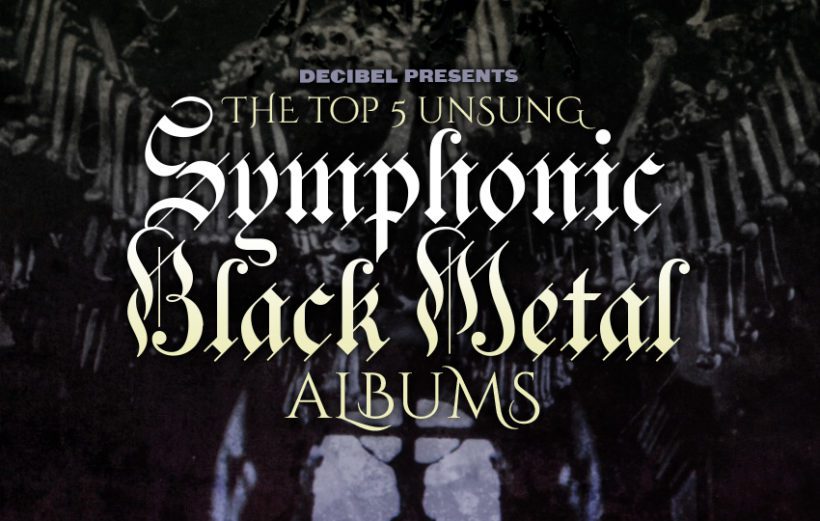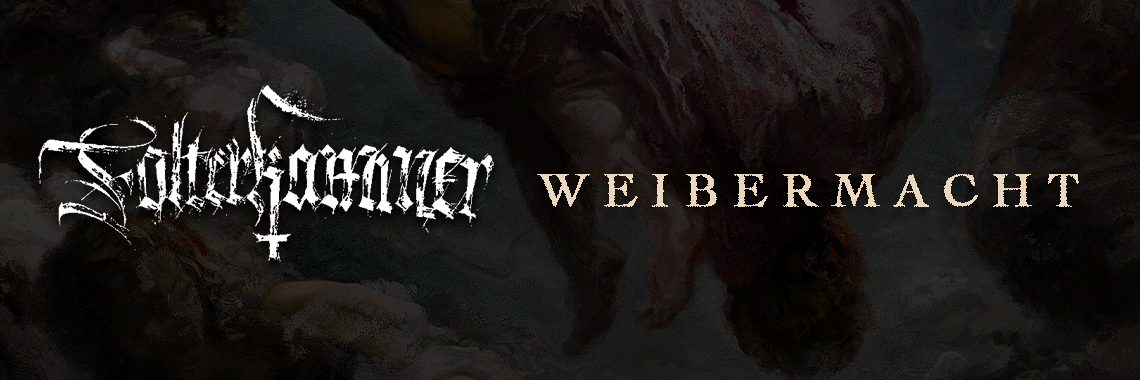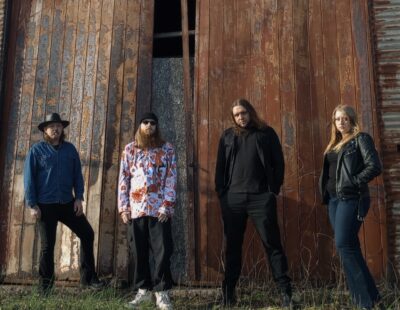
Say what you want, but symphonic black metal has its place in the pantheon of black metal sub-genres. Likely, it was the symphonic part of black metal that first jettison from the proverbial grave. Cradle of Filth, Emperor, Arcturus, and Dimmu Borgir may be the genre’s best designs, but underneath there was a broad and deep gulf of ivory tinklers that were involved in and helped extend out from black metal’s most basic sonic tenets. Many a list have been built and digital ink spilt on the best of the best. They’ve had their shots in the moonlight time and again. Now, it’s time to flip through the annals of symphonic black metal to herald the unsung, the forgotten, and the less fortunate of symphonic black metal.
Assembling a Top 5 was relatively easy, actually. But the more digging (and remembering) naturally brought to light bands, who, at the time, were forgettable or of questionable quality or merely obscured by the strong winds (of sophistication) coming off the peak of the mountain. To wit, I cycled past Old Man’s Child and Covenant (for obvious reasons), crossed out Carach Angren, tossed out Nokturnal Mortum (musically, yes), thought Hecate Enthroned too sophomoric, and felt Agathodaimon didn’t hold up to time, so I unleashed the word “unsung” into the fray. That certainly narrowed the field of contenders — that’s right, Tartaros gets booted — to a list of 50. Wittling that list down to 5 (with another 5 “noteworthy contenders”) took effort and even a concerted appeal to wedge in Gehenna by my esteemed (and persuasive) editor, Albert, to assemble in its final form, but through chariots of thunder and in wordless chambers I persevered.
Nights of symphonic black metal overdose and over-overdose has, dear readers, resulted in the Top 5 Unsung Symphonic Black Metal Albums you have before you. Read, listen, argue, agree (not likely), and put up your own Top 5 unsung black metal albums. We’ll try to hear you out… The grand psychotic castle beckons!
5. Bishop of Hexen — Archives of an Enchanted Philosophy (1997)
Israel-based Bishop of Hexen emerged from the most surprising of countries with debut album, Archives of an Enchanted Philosophy. Not that Izzy didn’t have its fair share of bands — Salem, Orphaned Land, and once upon a time Melechesh — but symphonic black metal felt antithetical, in the most obvious of ways, to the ageless religious history (and conservatism) of the region. Well, the young Ramat-Hasharon boys broke out the synthesizers, ghostly vocals, distant thunder drums (and movie samples), wrote up a demo in the form of 1996’s Ancient Hymns of Legends & Lore, and slowly became unsung darlings of the symphonic black metal movement too many years too late. Bishop of Hexen’s deal with then-active Hammerheart Productions out of Korea probably didn’t seal their respective ’90s fate, as the label was very active in spending money on promo and advertising. Likely, the reason Bishop of Hexen and their brand of atmospheric symphonic black metal stayed squarely in the Levant is geographic location. Bands in Israel may’ve well been from Mars in the mid-’90s. Debut album Archives of an Enchanted Philosophy is a lost gem, in that it’s largely guitar-less (production problems, I think) and lacks any real intensity. The album is, however, noted for its storm-in-the-distance production, Balzamon’s great vocal performance, and, ultimately, the rarity of the original. Alas, let’s hail in keyboard purgatory Bishop of Hexen’s ghastly Archives of an Enchanted Philosophy!
4. Diabolical Masquerade — Nightwork (1998)
Diabolical Masquerade came to light during Katatonia’s brief schism in 1995, but was formed by Anders ‘Blakkheim’ Nyström two years earlier. By the time Nyström’s solo project — death metal luminary Dan Swanö also had a significant hand here — was off and running, Katatonia had reformed, Nyström had departed Bewitched, and the world was turning anew. Diabolical Masquerade itself had managed to outlay three albums in three years, considered wildly prolific, if nuts during a time when two- to three-year album cycles were the norm. Once Nightwork came into view in 1998, it was clear Nyström (and Swanö) were taking symphonic black metal to the darkest depths. Debut Ravendusk in My Heart (1996) and The Phantom Lodge (1997) had their moments, but Diabolical Masquerade upped the overall songwriting quality and production aesthetic on Nightwork. Songs like “Rider on the Bonez,” “The Zkeleton Keyz to the Dead,” “Thiz Ghoultimate Omen,” and “Haunted by Horror” felt somewhere between a haunted Victorian mansion and a cemetery devoted to Medieval carnies. Original copies of Nightwork were wrapped in an embossed digipak with the Sedlec Ossuary cover art frightening approaching posers.
3. Anorexia Nervosa — New Obscurantis Order (2001)
France’s illustrious symphonic black metal hopefuls Anorexia Nervosa never got the credit they deserved for: A) their unbridled savagery and B) their super-Classical (of the Late Romantic period) take on black metal. The west coasters (from the Nantes region) had two albums before and one after New Obscurantis Order before splitting into aeonic infinity. Truly, the then-quintet were breathing proverbial fire by the turn of the millennium. New Obscurantis Order, insanely subtitled “A brand new Bible for the XXIst Century Youth,” is the product of their righteous musical insanity. Opening duo “Mother Anorexia” and “Châtiment de la rose” set the stage for Anorexia Nervosa to lay waste to the flowery contingent of symphonic black metal. In fact, Anorexia Nervosa were more intense, on all levels, than most black metal of day (and now, really). Put “Le Portail de la Vierge” or “Ordo ab Chao: The Scarlet Communion” against anything that’s ruling now… No contest! Anorexia Nervosa, however, weren’t afraid to spread wings, as heard on the Candlemass cover of “Solitude,” which under their guise sounds orchestral (naturally) yet dark and perverse… That solo! FUCK!!! If you slept on Anorexia Nervosa’s New Obscurantis Order the first time, Osmose Productions re-released it on LP late last year.
2. Gehenna — Seen Through the Veils of Darkness (The Second Spell) (1995)
When Norway ruled the black metal world in the early to mid-’90s, Stavanger-based symphonic black metallers Gehenna blew the world apart with their EP First Spell. Previous efforts — two demos and the Ancestor of the Darkly Sky 7″ EP — certainly set the groundwork, but were nowhere near the quality and vision of where Sanrabb (Morten Furuly) and Dolgar (Tom Steffen Voetmann Simenstad) were taking their haunted creation on First Spell and debut album, Seen Through the Veils of Darkness (The Second Spell). One of the primary attributes of Gehenna’s creep was harpsichord-sounds of keyboardist/organist Sarcana (Nina Hanslien). Her take on Vic Mizzy’s “The Addams Family” theme song was nothing short of groundbreaking. By the time Gehenna belched out songs like “Lord of Flies,” “Shairak Kinnummh,” “The Mystical Play of Shadows,” “A Myth…”, and most importantly “A Witch Is Born” the keyboards were less Mizzy and more, uh, Grieg, and Gehenna weren’t playing house-on-a-haunted-hill anymore. They wanted blood!
1. SiriuS — Aeons of Magick (2000)
Lisbon-based SiriuS (or Sirius) were aching to be Emperor’s close cousins. After two well-received demos in 1998, the Portuguese transformed into the Pavlova of the eighty-eight, casting a veritable spell of spells on debut album, Aeons of Magick, released in 2000 on Samoth’s (yes, of Emperor fame) own Nocturnal Art Productions. Awash in keyboards, orchestral motifs, and spacey textures, Aeons of Magick signaled to new generations that symphonic black metal could be produced, expertly played, and, uh, sophisticated even if it didn’t originate from Norway. Clearly, Vukodlack (Daniel Cardoso; now moonlighting with Anathema) had his preferences for atmosphere, with the keyboard and all its constituent sounds overlaying SiriuS’ black metal aesthetic. Vocalist Gornoth truly gives a spectral performance throughout, while Draconiis’ (also of Corpus Christii fame) guitars provide the necessary distorted texture for Aeons of Magick to be black metal and simply not another keyboard-ambient album, for there are two full instrumentals here. Key tracks are: “Sidereal Mirror,” “The Collapsing Spheres of Time,” “Travellers of the Stellar Ocean,” and “Ethereal Flames of Chaos.” SiruS never reached their intended heights, but that hasn’t stopped us from not forgetting the Portuguese list-toppers from mastering symphonic black metal on their first outing. Hail!
Noteworthy contenders:
1. Limbonic Art — Moon in the Scorpio (1996)
2. Lunar Aurora — Weltengänger (1996)
3. Mundanus Imperium — The Spectral Spheres Coronation (1998)
4. Obsidian Gate — The Nightspectral Voyage (1999)
5. Alghazanth — Thy Aeons Envenomed Sanity (1999)







